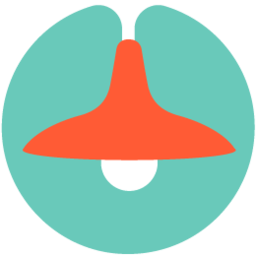Dance / Movement Therapy
Dance / movement therapy (DMT), sometimes called "movement psychotherapy," is the therapeutic use of movement and/or dance to better integrate the intellectual, emotional, and physical aspects of the body for improved health and well-being. This therapeutic practice dates back to the 1940s and is grounded in the idea that changes in the body are closely tied to changes in the mind. DMT includes everything from yoga, to traditional dance, to simple stretching. It is often used to help support eating disorder recovery, improve body image, self-esteem, and develop communication skills. DMT is not just dancing, or just another form of exercise. A therapist specializing in DMT will be trained to read your movements, body language, and other nonverbal cues to address your specific needs. Think this approach might work for you? Reach out to one of TherapyDen’s DMT specialists today.
Find Your Match
Meet the specialists
DMT is the therapeutic use of movement to further the emotional, cognitive, physical and social integration of the individual, based on the empirically supported premise that the body, mind and spirit are interconnected. Movement is used as a catalyst, and a means into the person's inner feelings and a way to express, cope, interact with others, and integrate their experiences. Is it fancy? No! Movement&dance can be anything from breathing, posture, communicating, the way we hold ourselves.
— Kim Stevens, Licensed Marriage & Family Therapist in Oakland, CAThis is a creative and somatic method that invites in body awareness as well as expressive movement. Movement signifies vitality, change, adaptability, and is the opposite of stuckness and stagnation. When we mindfully allow thoughts and emotions to move, we can ride the waves of life with grace.
— Lauren Pass Erickson, Psychotherapist in Boulder, COI am an expert in dance movement therapy, a specialized form of therapy that uses movement and body awareness to promote emotional, physical, and cognitive healing. With a background in both psychology and the arts, I integrate the expressive power of movement with traditional therapeutic techniques to help clients process emotions, reduce stress, and enhance self-awareness. Dance movement therapy allows individuals to connect with their bodies in a nonverbal way.
— Frankie Wanger, Counselor in York, SCMy primary modality is Yoga Therapy and each session has talking, movement and meditation. The body is the gateway to our inner world and we use the body as a a key tool in healing and integration. Sometimes this can include yoga poses, or you might create your own intuitive shapes that express what his happening in your body, mind and heart. This work can also entail feeling sensations move through the body with awareness, but not actual movement. Each session is uniquely tailored to you.
— Laura Humpf, Marriage & Family Therapist in Seattle, WADance therapy is effective for several reasons. It combines physical movement with emotional expression, allowing individuals to access and release emotions that may be difficult to express verbally. Dancing activates the body-mind connection, promoting self-awareness and self-expression. The rhythmic movements, music, and creativity involved in dance can reduce stress, improve mood, and increase feelings of joy and vitality. Dance therapy also promotes physical health and flexibility.
— Jacob Bolton, Therapist in Albemarle, NCI received my degree in Dance/Movement Therapy. While the name can be a bit intimidating to some, I employ movement interventions in a client-focused manner and only when people want to use them. This can vary from identifying what emotions feel like in your body all the way up to doing things like punching pillows to process anger.
— Elise Alvarez, Licensed Professional CounselorI use Dance/movement therapy alongside psychodynamic and humanistic approaches. I use kinesthetic empathy to help give me more information about the client and how they are showing up that day. Our movement and body tells us so much that words alone cannot. This is why I find it to be an extra layer of being able to see clients and help them create healing. DMT helps create somatic healing. I will help you learn to regulate your nervous system which I find to be great for anxiety and PTSD.
— Moira Casalino, Creative Art Therapist in , NYEvery small movement, gesture, even your energy level are an expression of who you are, what you’re feeling, and what you have lived through. In session I’ll observe your movements and how they change based on our conversations, also match your energy level and respond with my own body in ways to support what you’re feeling. The movements are a tool and intervention to help you access your unconscious patterns and move towards a place of healing.
— Kimberly Bevans, Licensed Mental Health Counselor in West Roxbury, MADance/Movement Therapy (DMT) is a type of expressive art therapies which utilizes movement, rhythm, and the mind-body connection to express, communicate, cope, and gain insight. Sessions may include what you typically think of with dance however it can also include learning ways to understand how our physical body plays a role in our thoughts, emotions, and behaviors. Prior clients report feeling more connected to themselves and increased joy in life.
— Juliet Haas, Licensed Professional Counselor in Milwaukee, WIDance/movement therapy is the psychotherapeutic use of movement to promote emotional, social, cognitive and physical integration of the individual. What does that mean? It means that my approach will always consider both mind and body. We express ourselves in many ways. This includes verbal language, movement, artistic expression and beyond. This approach allows for therapy to be tailored to an individual's needs, in each session and over time for optimal support.
— Anne Vick, Creative Art Therapist

